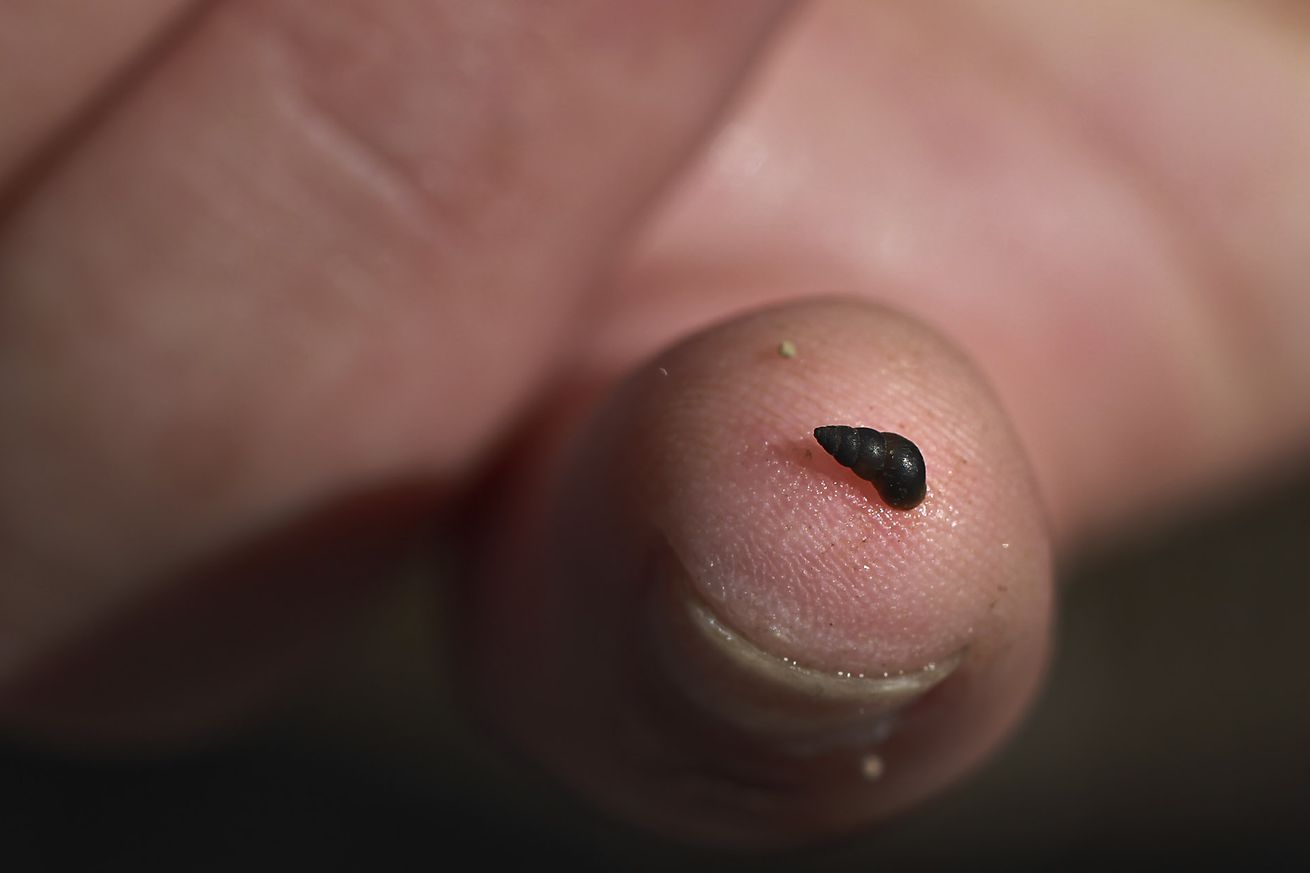Mark Abramson, of Heal the Bay, displays a New Zealand mud snail on the tip of his little finger at in Medea Creek at Natural Park in Oak Park on Friday March 3 2010. | Photo by Brian Vander Brug/Los Angeles Times via Getty Images
DNA sleuthing helped scientists spot early outcrops of a spreading snail invasion in Pennsylvania. The method could be used to spot the unwanted critters before they cause serious damage. That way, conservationists can stop them from conquering even more places.
New Zealand mud snails became a global pest in part because they can reproduce asexually — just one snail in a new area can essentially clone itself until there are 500,000 snails in a single square yard. They’re about the length of a pencil eraser so they’re hard to find until there are so many in a location that it’s nearly impossible to stop their spread.
“It’s kind of…


